Installing bigger tires is often the first modification ATV owners want for their bikes. Bigger is always better, right? Well, before you go ahead and place an order for a new set of rubber, there are a few things to consider. As you will see, the biggest and most aggressive tires may not be the best option for everyone.
Page Contents
When you’re thinking about switching to bigger tires, it’s essential to keep in mind that the manufacturer chose the stock tire size specifically to fit the engine size, suspension geometry, driveline strength, and transmission setup of that ATV model.
Changing to bigger tires will affect the carefully designed proportions between these components out of balance, potentially causing reduced overall performance, premature wear, or even sudden component failure.
But is there any wiggle room, or are you stuck with the stock tires?
Most ATVs can take tires one to two inches larger in diameter than stock without modifying the vehicle. However, even bigger tires usually require modifications to prevent rubbing, loss of torque, premature driveline- and drive belt wear and correct offset gear ratio.
This means if your stock tires are 26 inches in diameter, a 27 inch and probably a 28-inch tire as well should not cause any significant issues that trigger a need for extensive modifications.
So if you’re looking for slightly better off-road performance without breaking the bank on expensive mods and upgrades, you are better off not deviating more than one or two at the tops from the stock tire diameter.
But what if you want to go even bigger? What are the potential issues you run into, and how do you solve them?
When trying to install oversized tires on a stock ATV, the first thing you’ll notice is that the tires will catch on the bike’s bodywork, undercarriage components, frame, brake lines, or other parts inside the bike’s wheel well.
A bigger tire may not cause rubbing on smooth terrain.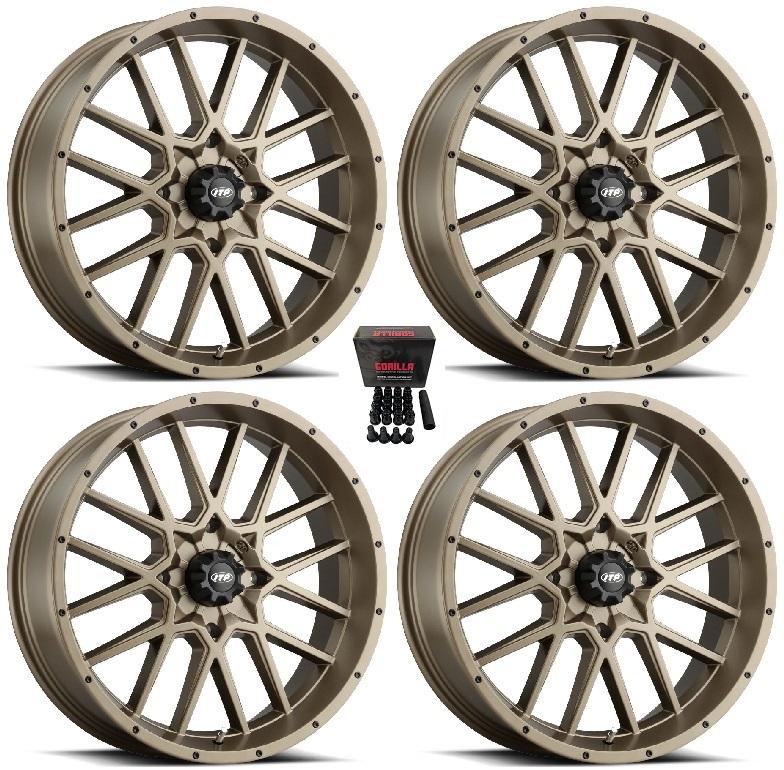 But at soon as things get rougher and the tire starts bouncing up and down in combination with sharp turns, problems begin to arise.
But at soon as things get rougher and the tire starts bouncing up and down in combination with sharp turns, problems begin to arise.
The front wheels are typically going to rub first because they usually move around more. With the rear tires, the exhaust muffler often gets in the way first, along with the fender flares.
There are a few modifications you may consider doing to the bike to combat this issue:
Trim the fenders. When increasing tire size by two to three inches, you may get away by trimming off the outer portion of the plastic wheel fenders. I find that an angle grinder with a standard cutting disk makes for nice and clean cuts, but other cutting tools such as a jigsaw will probably work as well.
Install a lift kit. This mod is the most common and considered the best option to gain more clearance to fit bigger wheels and tires. Lift kits come with all the parts you need to increase the ride height of your ATV. You can get kits that raise the bike to anything from one to six inches or more.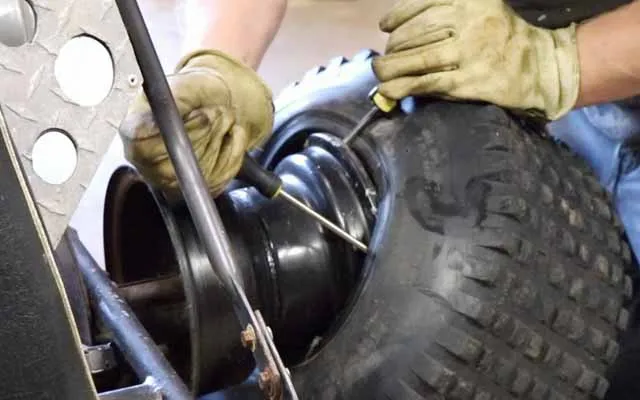
The kits are not usually not universal, so you’ll need a kit that’s specifically made for your brand and model of ATV. Within the kit’s spec sheet, you’ll often find information on the maximum size tires you’ll be able to fit when the kit is installed.
The smallest kits typically consist of spacers, custom brackets, and the required longer bolts. They cost anything from $50 to $200.
As you go up in size, the kits become more comprehensive and also more expensive. A four or six-inch lift kit typically consists of lift brackets, spring spacers, custom A-arms, more durable axles, heavy-duty tie rods, extended brake lines as well as the required mounting hardware. Expect to pay from $200 to $2000 or more.
Install wheel spacers. The final option to gain better clearance in the wheel wells is by installing wheel spacers. Wheel spacers are metal discs that bolt onto the wheel studs to move the wheel outwards. You can get spacers in sizes ranging from ¼ inch to three inches or more, but I do not recommend getting spacers wider than two inches at the tops.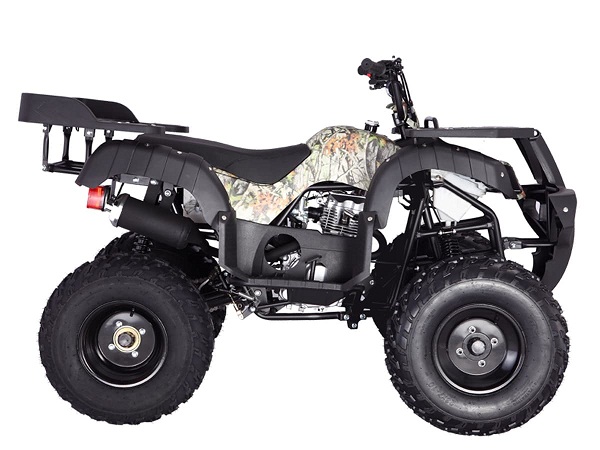
While wheel spacers offer a quick and easy way to increase clearance, they come with their share of drawbacks.
As the wheel is moved further outward from the wheel hub, the ATV becomes increasingly harder to steer and adds more strain, and causes more wear to the undercarriage components and driveline.
Check this post to learn more about the pros and cons of installing wheel spacers on your ATV.
Related: How to Choose and Install ATV Wheel Spacers
One of the significant downsides of installing bigger tires is a loss of torque. This happens mainly because of the bigger circumference and because bigger tires typically weigh more.
While ATVs over 500cc may pack enough power to handle tires two inches larger in diameter, ATVs smaller than 500cc may begin to struggle already with a one-inch taller tire.
Using a tire with a longer circumference is almost like installing a high gear kit on the ATV or always running it in a slightly too high gear.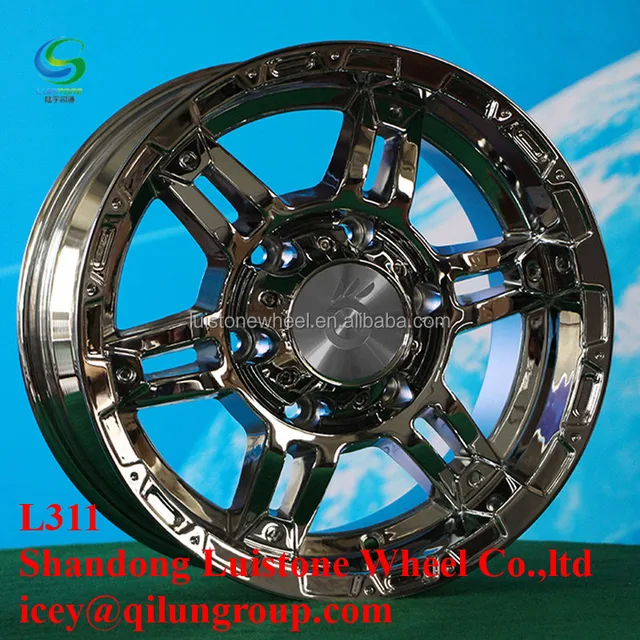 And a heavier tire means the engine needs to use more power only to turn the tire which leaves less power for acceleration.
And a heavier tire means the engine needs to use more power only to turn the tire which leaves less power for acceleration.
Related: ATV Mud Tire Weight Comparison (With Charts)
To gain some torque back, you can install a clutch kit or a gear reduction kit.
A Clutch kit will be the best alternative for those that go up one or two inches in tire size and like to ride fast. The kit uses stiffer springs to change at what RPMs the clutching phase happens. It’s like recalibrating the clutch to match the bigger wheels. A quality clutch kit will set you back around $300.
A gear reduction kit is likely the best option for those that go up no more than two to three inches in tire size but go slow for the most part. This category of riders will be those that are into rock crawling or those that do a lot of technical riding. There are two main types of gear reduction kits on the markets: portal gearboxes mounted on each wheel hub or internal transmission gear reduction kits.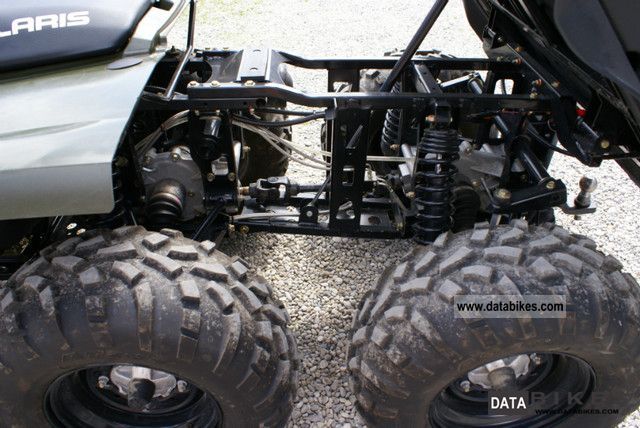
A Clutch kit AND a gear reduction kit may be required if you go up more than three inches in tire size.
Related: Will Bigger Tires Make an ATV Faster? (Or Slower?)
A bigger tire’s added weight and longer rolling circumference put more strain on the clutch belt and shorten its service life. You can reinforce your clutch by installing a heavy-duty drive belt. They do cost more but may save you both money and agony down the line.
Heavier and larger diameter tires not only put more strain on the drive belt. In fact, the whole driveline will need to work harder. The CV joints are particularly prone to premature wear because of the added strain and because the joints have to work at an increased angle due to the added height.
Consider installing heavy-duty axles and CV joints to make them last longer and reduce the risk of them failing when your big tires suddenly catch traction as you spin them at full throttle in deep mud.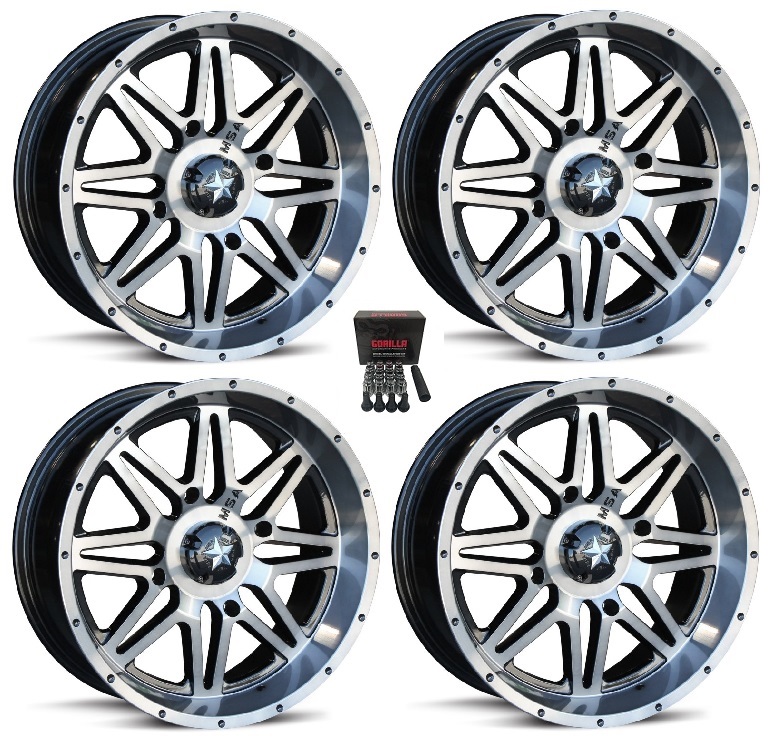 Upgraded shocks will keep the added weight of the tire in check as it bounces up and down on uneven terrain.
Upgraded shocks will keep the added weight of the tire in check as it bounces up and down on uneven terrain.
While better ground clearance is one of the main reasons people install bigger tires and lift kits on their ATV, it’s essential to understand how it affects the bike’s stability. As the frame, engine, and body lift from the ground, so does the center of gravity.
An ATV with a high center of gravity may become top-heavy and more likely to tip when cornering or going up or down steep hills.
To combat this issue, you have three main options to choose from:
Get wheels with a wider offset. The offset of a wheel tells you where the wheel’s centerline is located in relevance to the outer surface of the wheel hub. The offset can be negative, zero, or positive, and the wheel center shifts further out as the offset decreases. Let’sLet’s say your stock wheel has an offset of -10mm. By installing wheels with an offset of -20 instead, the wheel shoots 10mm further out from the ATV, making the bike more stable when cornering.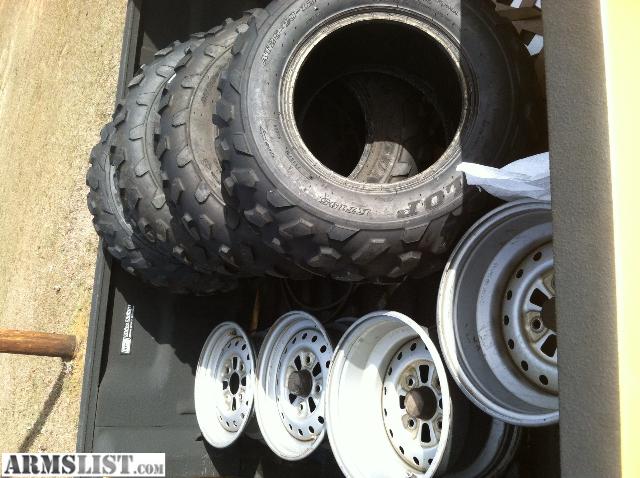
Install a lift kit with a wider stance. Some more extreme lift kits include wider A-arms and longer axles that move the wheel hub further out than stock. The spec sheet of the kit should include information on how much the kit widens the ATV. While this is likely the best option to make an ATV wider and more stable, it is also the most expensive.
Install wheel spacers. If new wheels do not fit your budget, you can always install wheel spacers to achieve much of the same effect.
Note that some manufacturers have placed certain restrictions because of some of the issues that may come with installing bigger tires.
While a small increase of one to two inches is usually allowed, you should always check the warranty terms to ensure that the wheels and modifications you are planning are permitted.
Stock tires offer decent overall performance in a wide variety of riding applications ranging from utility work, high-speed trail riding to rock crawling and mud riding.
However, no one tire offers optimal performance in all of these scenarios. If you want extreme performance when you go mud bogging, you’ll need completely different tires than the need for excellent grip when rock crawling.
That is why most people want bigger tires; to optimize performance in specific riding conditions.
Better traction and flotation in wet mud, snow, or sand. Bigger tires with a more aggressive thread pattern typically offer better flotation and traction in wet conditions.
Better ground clearance. The added ground clearance gained by installing bigger tires lets you clear stumps, rocks, or other obstacles that would otherwise leave you high-sided.
A more aggressive look. Other riders want bigger tires because they think it looks meaner, more aggressive, and better in general.
While huge tires may look cool, they may not be the best option for you.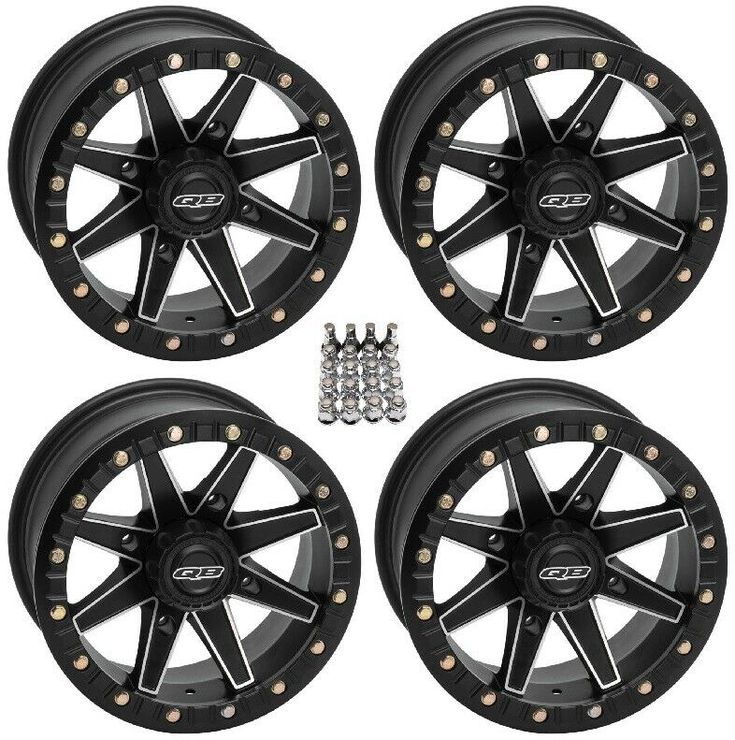 You need to carefully consider what type of riding you’ll be doing the most. Then, use these guidelines to choose:
You need to carefully consider what type of riding you’ll be doing the most. Then, use these guidelines to choose:
Utility work and occasional recreational riding. For most types of utility work and the occasional off-road experience, the stock tires will provide an ideal balance between traction, flotation, maneuverability, and performance.
Rock crawling and technical riding in rough terrain. You may want to increase the tire size slightly to increase the ground clearance for any technical riding. However, tires more than two inches from stock may case too much of a negative effect on stability and maneuverability in rough terrain. Also, the aggressive thread pattern found on some of the largest ATV tires is not beneficial for traction on hard and rocky surfaces.
Mud bogging in waist-deep mud or muskeg. If you’re building a dedicated mudding machine, you generally want to go as big as your wallet, and the bike’s engine can handle.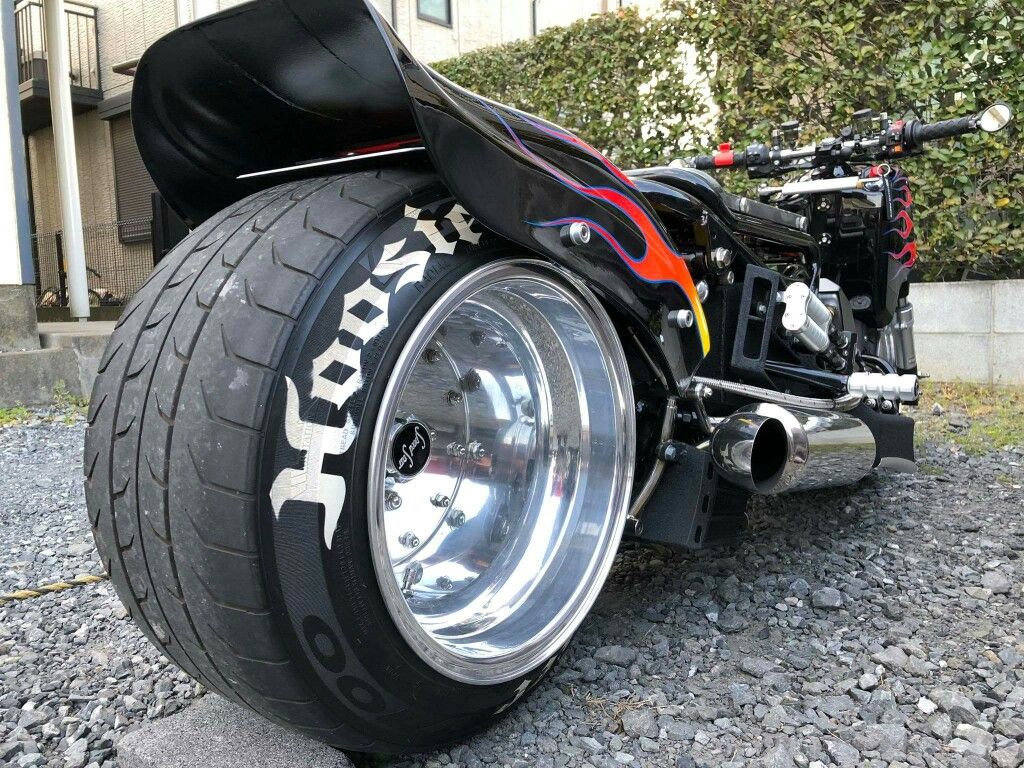 Those that live and breathe for this type of riding often choose 30 to 34-inch tires with enormous lugged tread patterns to paddle through the mud.
Those that live and breathe for this type of riding often choose 30 to 34-inch tires with enormous lugged tread patterns to paddle through the mud.
Trail- and dune riding. In this type of riding, you typically want to go fast. A taller tire may cause too much of a negative impact on torque for it to be worth it. However, if you do a lot of dune riding, consider a wider tire or even a dedicated paddle-style sand tire.
In some riding applications, the tire width matters more than the tire height.
In deep mud, you want a tall and narrow tire so that it’ll cut through the wet upper layer and into the firm underground for traction.
However, you’d want a wide tire on sand and in deep snow for better flotation and traction without sinking too deep into the surface.
The biggest ATV tires currently on the market are the Super ATV Terminators measuring a massive 34x10x15.
The front and rear tires on most if not all ATVs are the same height.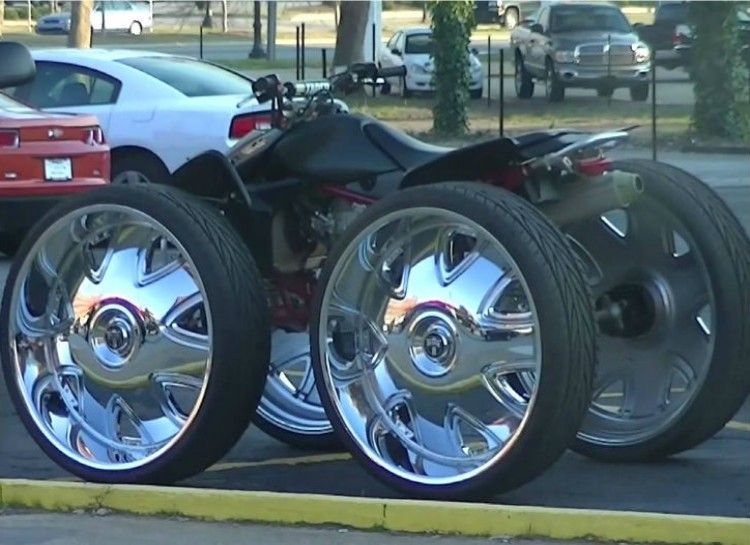 On a 4×4 ATV, you should never increase or decrease the height of only the front or the rear tires, as this may damage the bike’s transmission. The rolling diameter of both the front and rear tire needs to stay the same in relation to each other.
On a 4×4 ATV, you should never increase or decrease the height of only the front or the rear tires, as this may damage the bike’s transmission. The rolling diameter of both the front and rear tire needs to stay the same in relation to each other.
The tire width, however, is a different store. While changing the width of either the front or rear tires likely won’t cause any transmission issues, there are good reasons why the front tires on an ATV are smaller (narrower) than the rear.
Perhaps the first real modification that new ATV owners think about is upgrading to bigger tires. In this article, we’ll look at why you might decide on bigger tires for your ride while also considering the potential downsides. Finally, we’ll look at how to choose the perfect size of tire for your needs.
It’s possible to put bigger tires on any ATV, but that doesn’t necessarily mean you should.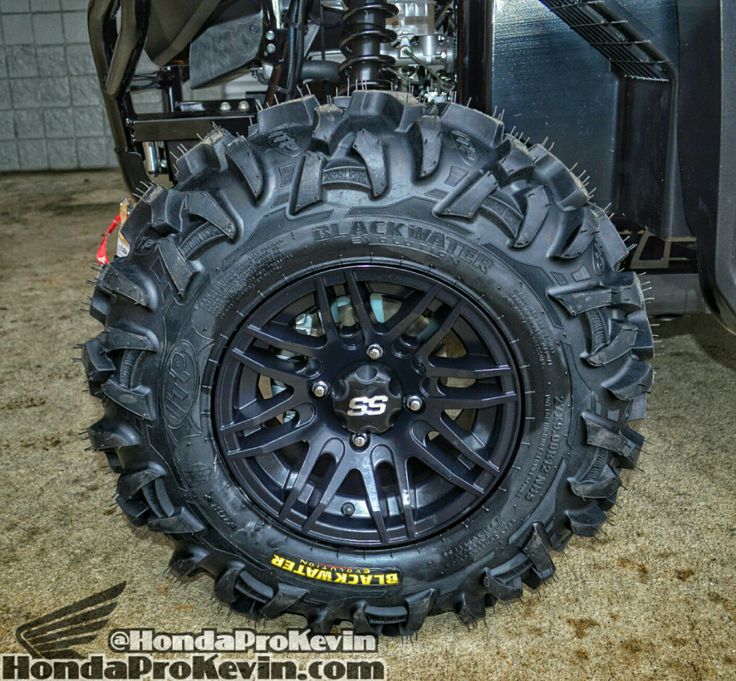 The stock tire size of your ATV has been chosen by the manufacturer to perfectly match the engine size, transmission, driveline, and suspension of your vehicle.
The stock tire size of your ATV has been chosen by the manufacturer to perfectly match the engine size, transmission, driveline, and suspension of your vehicle.
Switching to bigger tires alters these proportions. It’s possible to unbalance your ATV or put extra stress on specific components.
So, why do people want bigger tires if they can cause issues? Well, the stock tires of an ATV are usually for general use and can even be used for mud riding and rock crawling. But they don’t excel in any of these areas. For the best mud running, you’ll need mud tires. When rock crawling, for the best performance, you need grippy tires.
Bigger tires can make your ATV look super cool. A raised ATV with larger tires looks the part. But more importantly, you gain extra ground clearance. You can more easily clear rocks, stumps, and uneven terrain, allowing you to ride more aggressively in these conditions. And larger tires can offer better traction in mud, sand, and snow.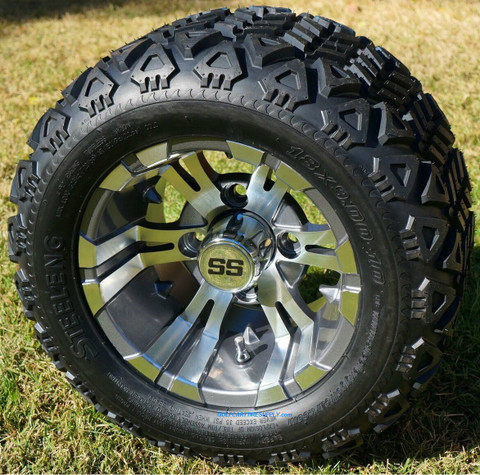
ATV are the core piece of riding gear for off-road riders
Find out the best look for you
There’s a trade-off on ATV performance when you install bigger tires. Without installing a lift kit or trimming the fenders, you’ll have less clearance between the tires and the bodywork or frame. This can result in rubbing. The easiest way to get around this is to install a lift kit.
Because your bike will now have a higher center of gravity, it’s much more likely to tip over. If you only increase your tire size a little, you can compensate with wheel spacers that widen the ATV slightly. Wider wheels can also offset the additional height, as can a lift kit with a wide stance. All of these things can help your higher ATV re-gain stability.
Torque loss is perhaps the biggest downside of installing larger tires. Because the tires weigh more and have a bigger circumference, more power is required fr om the engine to drive them.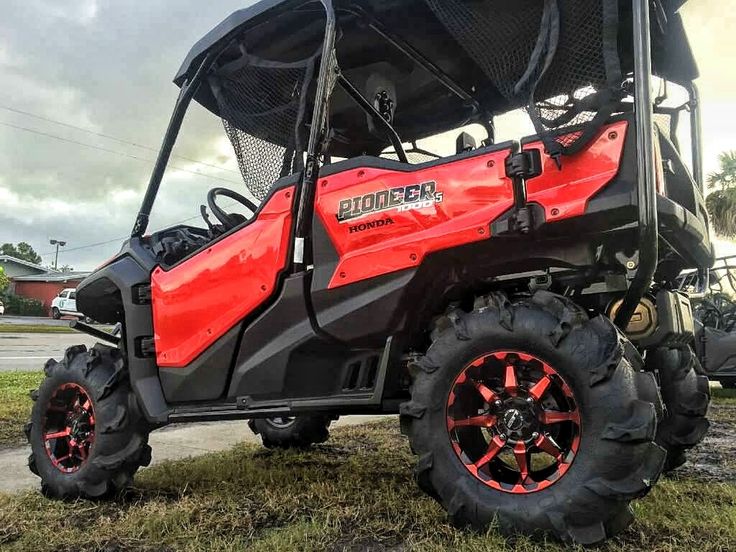 With a large tire size, it can feel like you’re riding in a higher gear at all times.
With a large tire size, it can feel like you’re riding in a higher gear at all times.
To compensate for this torque loss, you can install a clutch kit and/or gear reduction kit. A clutch kit changes when the clutching phase happens and aids the most in high-speed riding. A gear reduction kit is the better option if you want to recover torque at slow speeds, such as when rock crawling.
As you might expect, these modifications can put extra strain on other components. The driveline needs to work harder. Installing a heavy-duty clutch belt when you upgrade your tires makes sense.
The increased angle can put enormous stress on CV joints in the suspension, too. Without careful calibration, the suspension gets additional wear and tear and can even blow out if pushed to the limit while at an extreme angle.
The bigger the tires you choose, the more useful heavy-duty axles and CV joints become. The stock shocks your ATV came with isn’t designed to take a larger tire, though you can probably go up one or two tire sizes before replacement suspension becomes a requirement.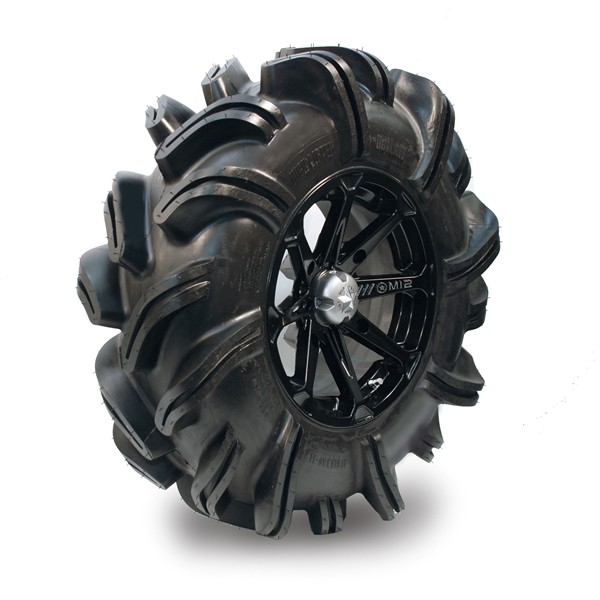
The height of all your new ATV tires should be the same, though you can choose different widths for the front and rear tires. Tire width is most important than tire height in some applications. You want a tall, narrow tire for mud, and a wide tire for snow, for example.
As a general rule, the stock tire size offers good (but not outstanding) performance in all applications. For technical riding and rock crawling, an increase of up to two inches can offer the ground clearance you need. Mud bogging benefits from much taller tires, whereas dune, trail, and snow riding benefit from wider tires.
-10%
HIT
ENDURO Camogrey
the most durable
279 EUR
251.10 EUR
AQUAMASTER Red
reliability & comfort
677 EUR
591.40 EUR
ALL SEASON Black
62 EUR
55. 80 EUR
80 EUR
-20%
NEW
SPEEDMASTER NEW Graphite
209 EUR
167.20 EUR
Explore all
Author: Alexey Kokorin
We have already talked about how to choose the right wheels and tires for your car. At the same time, many, in pursuit of their own goals, choose wheels as larger, but normal daily operation dictates its own conditions: they should be kept in factory settings. Why not install wheels larger than factory ones?
What does "more than factory" mean?
First, let's define what the phrase "more factory" means. The fact is that for almost all cars, manufacturers offer several options for the dimensions of rims and tires: each of these options is approved by the manufacturer, as it has been tested and means not only the physical ability to install the wheels on the car, but also the optimal operating parameters. Thus, if you bought a car with 15-inch wheels, but the manufacturer offers 17-inch wheels in a different configuration, you can install these on your car yourself without fear of negative consequences. However, before installation, you should definitely check the allowable wheel sizes for your car in the owner's manual to make sure that it is technically feasible and to choose the right wheel and tire size.
The fact is that for almost all cars, manufacturers offer several options for the dimensions of rims and tires: each of these options is approved by the manufacturer, as it has been tested and means not only the physical ability to install the wheels on the car, but also the optimal operating parameters. Thus, if you bought a car with 15-inch wheels, but the manufacturer offers 17-inch wheels in a different configuration, you can install these on your car yourself without fear of negative consequences. However, before installation, you should definitely check the allowable wheel sizes for your car in the owner's manual to make sure that it is technically feasible and to choose the right wheel and tire size.
When we say “larger than factory”, we mean, first of all, wheels that are larger than the manufacturer's recommendations. It is these "experiments" that affect performance. However, even if you act within the limits of what is permitted by the manufacturer, you cannot deceive physics, and installing 17-inch wheels instead of 15-inch ones, of course, will not go unnoticed either - much of what will be listed below will be true in this case.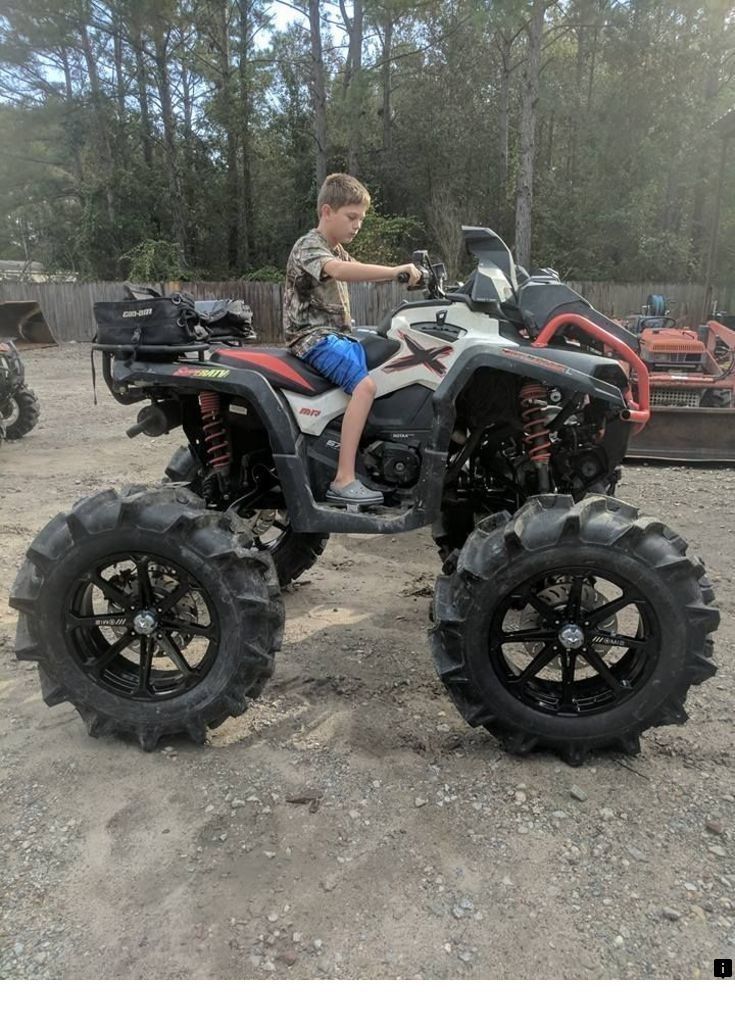
Let's also define a wheel as a ready-to-install assembly consisting of a tire and a rim. And "increase" in this sense is a multi-valued concept: after all, an increase in the diameter of the disk does not necessarily mean an increase in the diameter of the wheel. Let's figure it out in order.
Why is installing large disks harmful?
First of all, discs with larger diameters tend to carry more weight – and therefore the unsprung weight increases . A heavier wheel is more difficult for the engine to spin - that is, fuel consumption will become higher, and dynamics will be worse. In addition, an increase in unsprung mass also affects the suspension resource - it is designed for a certain load, limited by standard wheels.
An increase in the diameter of a disc is usually accompanied by an increase in its width, as well as a change in offset (the depth of the disc in the wheel arch). This changes the parameters of the wheel bearings, increasing the load on them, and significantly reduces their life.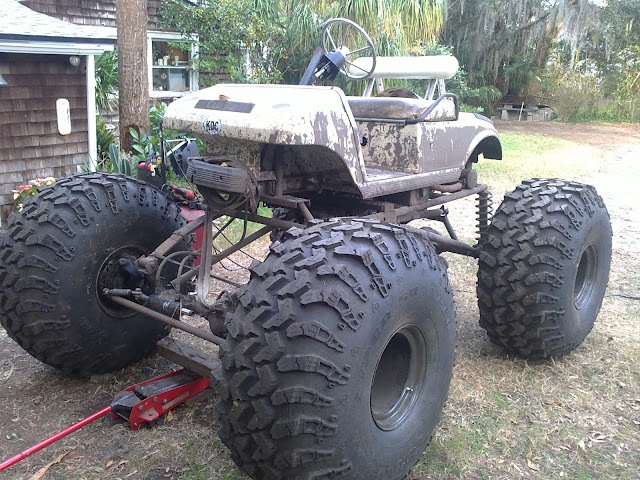 Depending on the degree of deviation of the parameters from the standard bearings, the bearings can last 20-30% less, or they can “crumble” literally every few thousand kilometers.
Depending on the degree of deviation of the parameters from the standard bearings, the bearings can last 20-30% less, or they can “crumble” literally every few thousand kilometers.
Now let's move on from wheels to tires - after all, increasing the diameter of the disk changes the parameters of the installed tires.
What's wrong with big tires?
The weight-for-size rule also applies to tyres: as a general rule, larger-diameter tires have more weight added to the wheel assembly and total unsprung weight.
The second drawback is related to the fact that in the vast majority of cases, the increase in the diameter of the disk occurs due to the reduction of the tire profile: that is, in order for new large disks to fit into the arch, they need to be put on lower profile rubber. Well, a decrease in the profile is a deterioration in the smoothness of the ride and the overall comfort of the car. In addition, a thinner tire absorbs shock loads worse and transfers them further - to the disk and suspension.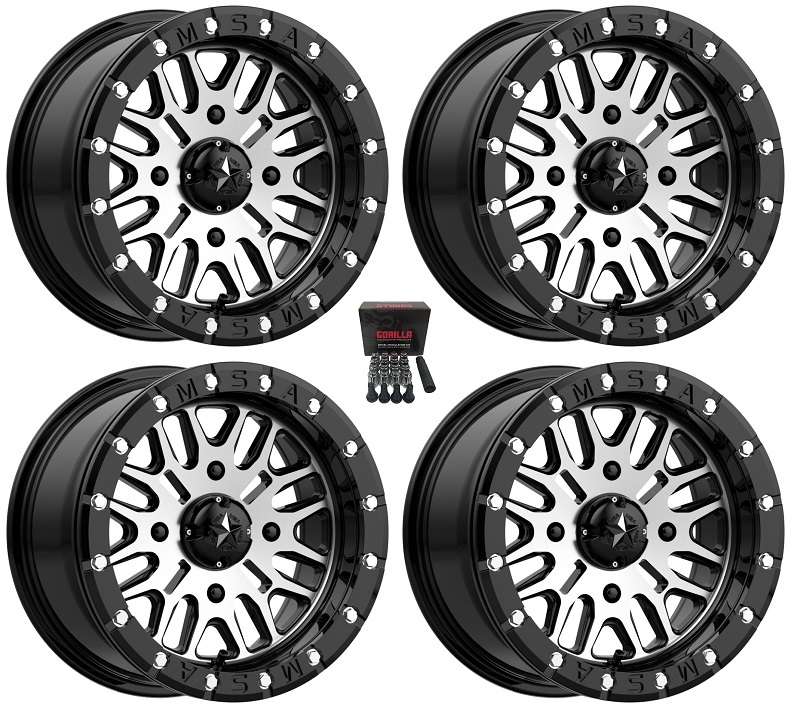 Thus, driving on low-profile tires on imperfect roads means a reduction in the life of the suspension and disks and a corresponding increase in operating costs, including for tires, the risk of damage to which increases with a decrease in profile.
Thus, driving on low-profile tires on imperfect roads means a reduction in the life of the suspension and disks and a corresponding increase in operating costs, including for tires, the risk of damage to which increases with a decrease in profile.
Yes, another indirect but still disadvantage is the financial side of the issue. More money will have to be paid not only for new wheels, but also for rubber for them, and for tire fitting, and for the potential repair of a low-profile tire.
Well, among the unpleasant consequences, we can mention a change in the accuracy of the speedometer readings: initially, speedometers are usually set to slightly overestimate the readings relative to the actual speed, and with a gradual increase in the diameter of the wheel, it will first become more accurate, and then will “lie” more and more. In addition, with increasing tire width, its tendency to hydroplaning .
Are there any advantages to fitting larger wheels?
Of course, increasing the diameter of the wheel does not mean continuous disadvantages, it also has positive aspects.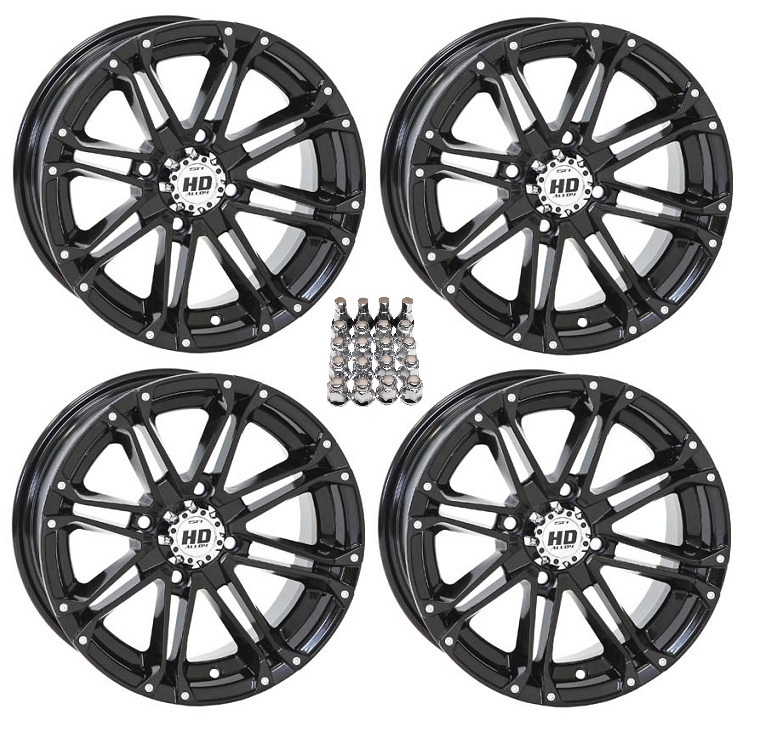 For example, larger wheels mean more ground clearance, as well as an increase in top speed, as a larger wheel travels more distance in one revolution. Increasing the width of the rubber means an increase in the contact patch with the road and, accordingly, grip with it - this improves the car's handling and cornering speed.
For example, larger wheels mean more ground clearance, as well as an increase in top speed, as a larger wheel travels more distance in one revolution. Increasing the width of the rubber means an increase in the contact patch with the road and, accordingly, grip with it - this improves the car's handling and cornering speed.
According to the letter of the law
One of the main disadvantages of oversized wheels is that they are simply prohibited by law. The technical regulations of the Customs Union in terms of tires and disks allowed for installation are simple and adamant: only those that “comply with the recommendations of the operational documentation of vehicle manufacturers” are allowed.
In addition, it should be remembered that the same technical regulations prohibit the so-called "welding" - disks of increased width, welded from several "stampings". Firstly, they are tritely unsafe, since they have a non-factory design, and secondly, the technical regulations do not allow "the presence of cracks on the discs and wheel rims, traces of their elimination by welding.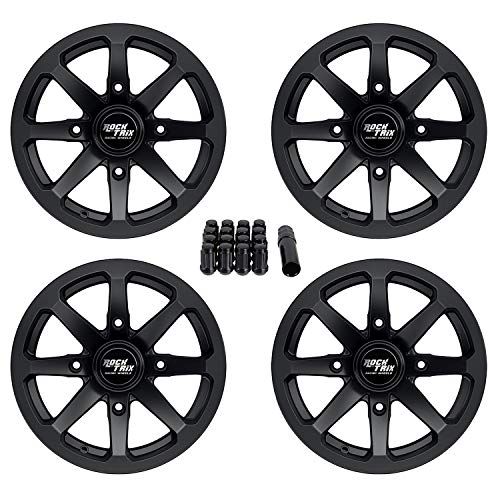 "
"
tires and wheels popular questions
Articles / New cars So that's what you are, Moskvich 3: getting acquainted with the car at the official start of production Yesterday, November 23, the Moscow Automobile Plant, which for a long time existed only in the status of a Renault Russia enterprise (until 2014 it was called Avtoframos) and stood idle for more than six months after the... 2755 6 2 11/24/2022
Articles / Practice What are universal, repair and sports catalysts and is it worth installing them Among the many promotional offers for removing the catalyst, there are others: in them, motorists are offered not a simple removal of the catalyst, but its replacement with a universal, repair one . .. 952 0 one 11/23/2022
.. 952 0 one 11/23/2022
Articles / Practice Do I need to warm up the car before driving in winter: we understand in detail In my personal rating of debatable and provocative topics, the articles “how to warm up a car in winter” take an honorable first place in terms of the number of absurdities, mistakes and other shortcomings. T... 2683 one 3 11/22/2022
Test drives / Test drive Haval Dargo vs Mitsubishi Outlander: the dog is barking, the stranger is coming In the Haval dealership in the south of Moscow, life is in full swing: buyers look at cars, communicate with managers and sign some papers.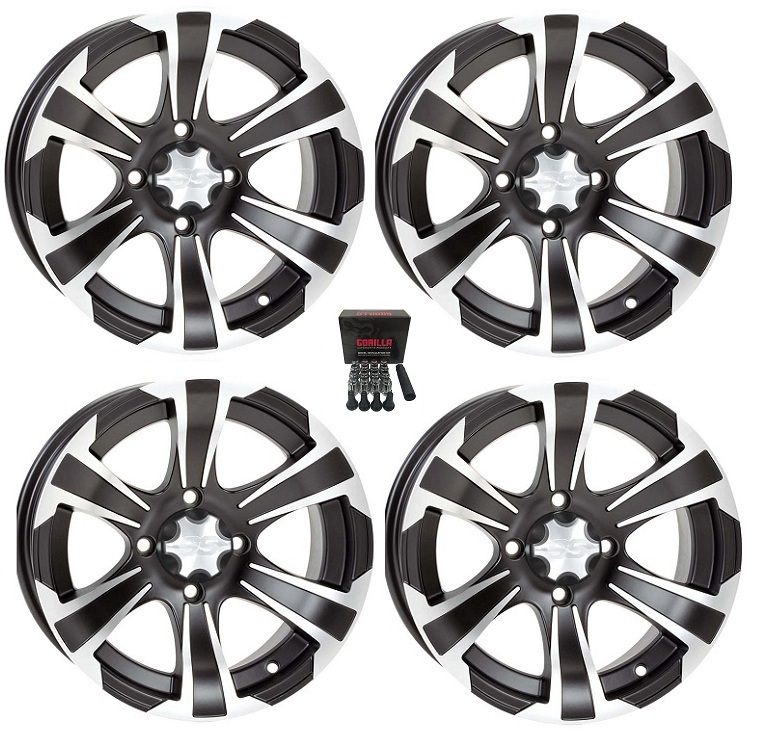 While I was waiting for the test Dargo, the same cross... 17386 7 205 13.09.2022
While I was waiting for the test Dargo, the same cross... 17386 7 205 13.09.2022
Test drives / Test drive Motor from Mercedes, emblem from Renault, assembly from Dacia: test drive of the European Logan 1.0 It would seem that what's new can be told about the second generation Renault Logan, known to every Russian taxi driver, as they say, up and down? However, this car has... 14039 ten 41 08/13/2022
Test drives / Test drive Geely Coolray vs Haval Jolion: Free Cheese? If! Do you want to buy a car today with a full warranty, on credit at an adequate rate, without wild dealer markups? Now this is still a task, because a full-fledged chain of "representation - s.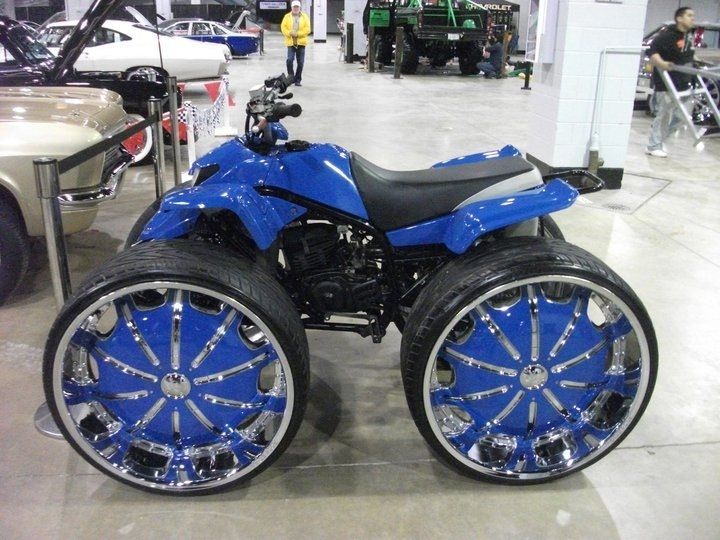 .. 11129 26 thirty 08/10/2022
.. 11129 26 thirty 08/10/2022
All tires and wheels for ATVs are by and large divided into two large groups: utility and sports. The former are designed for harsh operating conditions on any type of surface for a long time, and the latter are especially durable for high-speed driving on rather tough sports tracks.
We are more interested in utility tires. In order to maximize the pleasure of a trip along forest paths, mud, sand, water, snow and swamps, you need to initially take care of the most important thing - rubber suitable for each type of surface. Since each set of tires is quite expensive, you need to think about where you plan to ride most often and purchase tires suitable for these surfaces. Mud tires will get stuck in the sand, and sand tires won't work on the trail.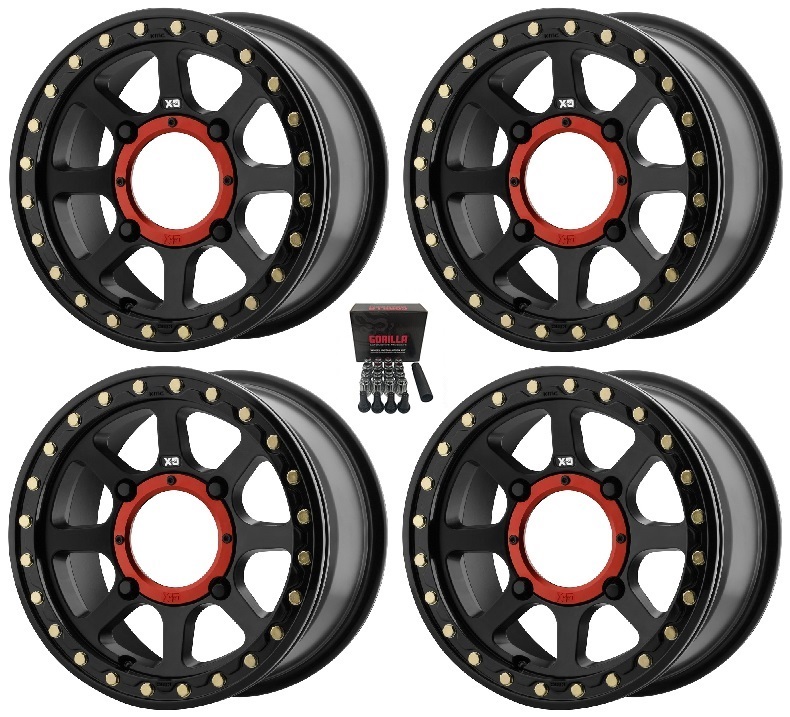 Designers have been puzzling over the creation of the most versatile tires for many years, but so far, this is just a dream. True, universal tires have already been created that will ideally prove themselves on different surfaces, but for special cases you will have to fork out and buy a special set of tires.
Designers have been puzzling over the creation of the most versatile tires for many years, but so far, this is just a dream. True, universal tires have already been created that will ideally prove themselves on different surfaces, but for special cases you will have to fork out and buy a special set of tires.
Since ATV tires are subjected to considerable stress during operation, they must be as strong as possible. Low pressure radial tubeless tires do this best. They are made in such a way that the carcass cord goes from one side to the other without crossing the fibers, and the outside of the shell is covered with a dense cord. These tires have excellent traction and do not lose contact with the surface when cornering. These tires are comfortable to use and easy to maintain.
Bias tires respectively have a diagonal design and are more suitable for soft surfaces such as mud.
Low tire pressure allows you to increase the contact patch with the surface, improving grip and increasing the quad's flotation.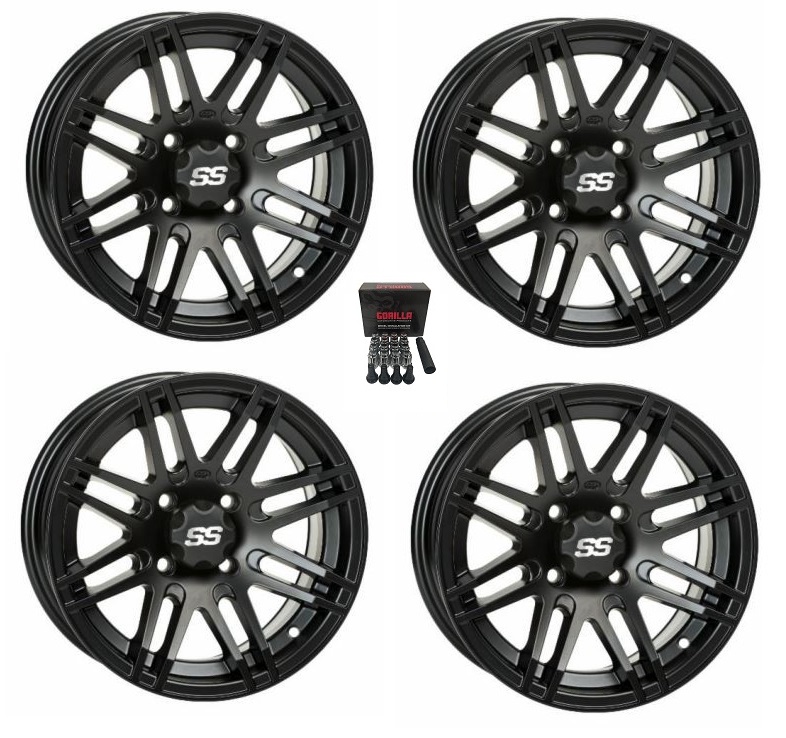 Depending on what surface you plan to ride on, for a harder surface, you need to reduce the contact patch by inflating the tire more, and for a soft one, increase it by lowering the tire pressure.
Depending on what surface you plan to ride on, for a harder surface, you need to reduce the contact patch by inflating the tire more, and for a soft one, increase it by lowering the tire pressure.
Tire sizes are different both in diameter and width, another indicator is the size of the rim on which these tires are installed. For example, 25×8-12″ means that the tire is 25 inches in diameter, 8 inches wide and fits on a 12 inch rim. Moreover, in order to increase traction, it is necessary to install tires at the rear wider than at the front, so that the rear wheels do not fall into the front track, but lay a new one with a larger area of contact with the surface. Typically, utility ATVs are fitted with 25-26 inch tires and this is optimal. But some fans want to put more tires, for example, 27-28 inches. Unfortunately, the design of many quadras does not allow this. To install such tires, you need to tune the car, lift it, and this does not always have a good effect on driving performance.